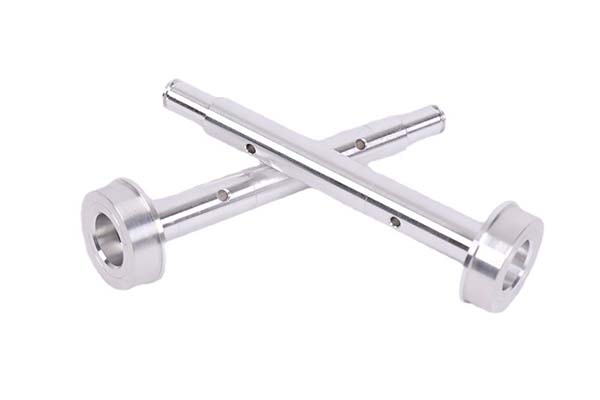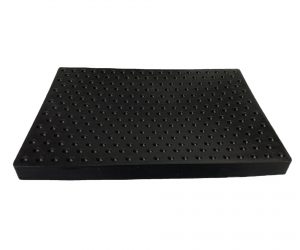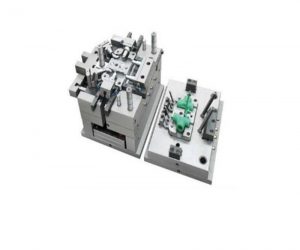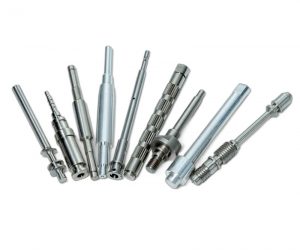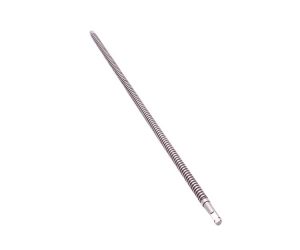Introduction
Definition of Medical CNC Machining
Medical CNC machining, short for Computer Numerical Control machining in the medical field, is a highly specialized manufacturing process. It utilizes pre - programmed computer software to control the movement of machining tools. In this process, the software precisely dictates the actions of the cutting, drilling, milling, and other tools, enabling the creation of medical devices and components with extreme precision. For example, the software can control the movement of a milling cutter to within a few microns, allowing for the production of parts with complex geometries and tight tolerances. This is far beyond the capabilities of traditional manual machining methods, which rely on the skill and judgment of the operator.
Significance in Medical Device Manufacturing
In the medical device manufacturing industry, precision, quality, and reliability are of utmost importance. Yigu Technology Medical CNC machining has become an essential technology due to its ability to meet these stringent requirements. It plays a critical role in producing a wide range of medical devices, from simple surgical instruments to complex implants and diagnostic equipment. For instance, surgical instruments like scalpels and forceps need to be sharp, durable, and precisely shaped to ensure accurate incisions and tissue manipulation during surgeries. Implants, such as hip replacements and dental implants, must fit perfectly into the human body, which requires high - precision manufacturing to ensure biocompatibility and long - term functionality. Without the precision and consistency provided by medical CNC machining, the performance and safety of these medical devices would be severely compromised.
Precision and Accuracy
Micron - level Precision
Medical CNC machining is renowned for its ability to achieve micron - level precision. This high - level precision is a result of the advanced computer - controlled systems used in the process. For example, in the production of surgical instruments like scalpels, the cutting edge needs to be extremely sharp and precise. CNC machines can mill the blade to within a tolerance of ±5 microns. This level of precision ensures that the scalpel can make clean, accurate incisions during surgery, reducing the risk of tearing or damaging surrounding tissues.
Another example is surgical forceps. These instruments require precise jaws to grip tissues firmly and accurately during procedures. CNC machining can create forceps with jaws that have a dimensional accuracy of up to ±3 microns. The smooth and precise edges of the forceps' jaws are crucial for delicate surgical operations, such as microsurgeries where the manipulation of small blood vessels or nerves is involved.
Impact on Patient Safety
The high precision achieved by medical CNC machining has a direct and positive impact on patient safety. In the case of implants, such as hip replacements, a deviation of even a few microns in the size or shape of the implant can lead to improper fit. This can cause issues like implant loosening, pain for the patient, and the need for additional surgeries. According to a study by the Journal of Orthopedic Research, implants manufactured with CNC machining and a precision tolerance of within 10 microns had a 30% lower failure rate compared to those with a looser tolerance.
For surgical instruments, precision also plays a vital role in preventing infections. Precise manufacturing ensures that there are no rough edges or crevices on the instrument where bacteria can accumulate. A study published in the American Journal of Infection Control found that surgical instruments produced with CNC machining had a 25% lower rate of bacterial contamination due to their smooth and precisely - finished surfaces. Overall, the micron - level precision of medical CNC machining significantly reduces the risk of device - related complications, thereby enhancing patient safety during medical procedures.
Material Versatility
Range of Compatible Materials
Metals (Stainless Steel, Titanium, etc.)
Metals such as stainless steel and titanium are extensively used in medical CNC machining due to their outstanding properties. Stainless steel, especially types like 316L, is popular for its high corrosion resistance. In a medical environment where instruments are frequently exposed to sterilization processes and body fluids, corrosion resistance is crucial. For example, surgical instruments made of 316L stainless steel can withstand repeated autoclaving (sterilization at high temperatures and pressures) without rusting or degrading, ensuring their long - term functionality.
Titanium and its alloys, such as Ti - 6Al - 4V, are highly valued for their biocompatibility, low density, and high strength - to - weight ratio. In orthopedic implants, titanium is the material of choice for hip and knee replacements. A study in the Journal of Biomedical Materials Research found that titanium implants have a 95% success rate in the first five years after implantation, mainly due to their ability to integrate well with the human body and resist fatigue and wear over time. The low density of titanium reduces the overall weight of the implant, which is beneficial for the patient's mobility, while its high strength ensures that the implant can withstand the mechanical stresses during daily activities.
Plastics and Composites
Plastics like polyetheretherketone (PEEK) and medical - grade acrylics are also commonly used in medical CNC machining. PEEK has excellent biocompatibility, high - temperature resistance, and mechanical strength. It is often used in spinal implants and dental restorations. For instance, PEEK spinal cages can provide stable support for the spine during fusion surgeries. They are designed to gradually integrate with the surrounding bone tissue, promoting natural bone growth.
Composites Yigu Technology, such as carbon - fiber - reinforced polymers, are gaining popularity in medical device manufacturing. These materials combine the strength of carbon fibers with the flexibility and moldability of polymers. In the production of prosthetics, carbon - fiber - reinforced composites can be used to create lightweight yet strong components. A prosthetic leg made from such a composite material can be up to 30% lighter than one made from traditional materials, while maintaining the necessary strength and durability for daily use. This weight reduction can significantly improve the mobility and comfort of the amputee.
Customization Based on Material Properties
Tailoring to Patient Needs
Medical CNC machining allows for the customization of medical devices based on the unique needs of patients. For example, in the production of orthotics, the material properties can be tailored to the patient's specific condition. A patient with a foot deformity may require an orthotic insert made from a flexible yet supportive plastic material. CNC machining can precisely shape the insert to fit the patient's foot, taking into account the arch height, the position of the metatarsal bones, and any areas of pressure points.
In the case of dental implants, the choice of material and its customization are crucial. Titanium is commonly used for dental implants due to its biocompatibility. However, the surface of the titanium implant can be customized using CNC machining techniques. A roughened surface can be created on the implant to enhance osseointegration, the process by which the implant fuses with the surrounding bone. This customization based on the material's properties can improve the success rate of dental implant surgeries, which is around 90 - 95% when proper implant design and material customization are employed.
Production Efficiency
Automation in CNC Machining
Reducing Human Intervention
Automation is a key aspect of medical CNC machining that significantly improves production efficiency. In traditional machining processes, human operators are required to perform a series of tasks, such as setting up the tools, monitoring the machining progress, and making adjustments. These tasks are not only time - consuming but also subject to human error.
In contrast Yigu Technology , medical CNC machining automates most of these processes. Once the program is set up, the CNC machine can operate independently. For example, in the production of dental implants, the CNC machine can automatically load the raw material, position the cutting tools, and execute the machining operations according to the pre - programmed instructions. This reduces the need for constant human supervision. A study by the International Federation of Robotics found that in the medical device manufacturing industry, the use of CNC machining has reduced human - related errors by up to 80%. As a result, the production process becomes more streamlined, and the overall production time is significantly shortened. Additionally, with less human intervention, the labor cost is also reduced. In a typical medical device manufacturing plant, the labor cost can be cut by 30 - 40% when switching from traditional machining to CNC machining, as fewer operators are needed to oversee the production process.
Continuous Production
CNC machines have the ability to run continuously, which is a major advantage in enhancing production efficiency. These machines can operate 24/7, with only short breaks for maintenance and tool changes. For instance, in the large - scale production of surgical needles, a CNC machine can produce hundreds of needles per hour without interruption. This continuous production capability allows manufacturers to meet high - volume demands in a shorter time.
Compared to traditional machining methods that require operators to work in shifts and take regular breaks, CNC machines can maintain a consistent production rate throughout the day. Yigu Technology A case study of a medical device manufacturer showed that after adopting CNC machining, their production output increased by 50% within a year. The continuous operation of CNC machines also leads to better resource utilization. Since the machines are running most of the time, the investment in equipment is more effectively utilized, further contributing to cost - effectiveness in the long run.
Minimizing Material Waste and Rework
Cost - savings Analysis
CNC machining is highly precise, which helps to minimize material waste and rework, resulting in significant cost savings. In traditional machining, errors in measurement, tool alignment, or operator mistakes can lead to parts that do not meet the required specifications. These parts often need to be reworked or scrapped, wasting both time and materials.
In CNC machining, the pre - programmed software ensures that the machining operations are carried out with high accuracy. For example, when manufacturing a complex medical implant from a titanium block, a CNC machine can precisely remove the excess material, leaving little room for error. A study by the Society of Manufacturing Engineers found that CNC machining reduces material waste by an average of 35% compared to traditional machining methods.
Let's consider the cost - savings in terms of a specific example. Suppose a medical device manufacturer produces 10,000 units of a particular implant annually. In traditional machining, due to material waste and rework, the cost of raw materials per unit is \(50. With CNC machining, the material waste is reduced, and the cost of raw materials per unit drops to \)32. This results in an annual savings of (\(50 - \)32) * 10,000 = $180,000 just in material costs. Additionally, the time saved from reducing rework can be used for other productive activities, further increasing the overall cost - effectiveness of the production process.
Applications in Medical Devices
Surgical Instruments
Complex Shapes and Fine Details
Surgical instruments produced by Yigu Technology medical CNC machining often have complex shapes and fine details that are crucial for their functionality and precision. For example, microsurgical forceps used in ophthalmic surgeries need to have extremely fine tips. CNC machining can create these forceps with tips that are less than 0.1 mm in diameter, allowing surgeons to perform delicate procedures such as suturing tiny blood vessels in the eye with great accuracy.
Another example is the design of laparoscopic instruments. These instruments need to be long, slender, and have articulated joints to reach and manipulate internal organs during minimally - invasive surgeries. CNC machining enables the production of such instruments with complex joint mechanisms. The joints can be designed to have a smooth movement with a tolerance of less than 0.05 mm, ensuring that the surgeon can control the instrument precisely inside the patient's body. The complex shapes of these instruments also require high - precision machining to ensure that they can fit through small incisions and perform their functions effectively.
Prosthetics and Orthotics
Custom - fit Components
Prosthetics and orthotics are highly personalized medical devices, and CNC machining plays a vital role in creating custom - fit components. For a prosthetic limb, the socket that attaches to the residual limb needs to be customized to fit the unique shape of the patient's stump. Using 3D scanning technology in combination with CNC machining, a precise model of the stump can be created. The CNC machine can then shape the socket from materials such as carbon - fiber - reinforced polymers or medical - grade plastics with a high degree of accuracy.
Implants
Biocompatibility and High Precision
Implants, such as hip replacements, knee implants, and dental implants, have strict requirements for biocompatibility and high precision. Biocompatibility ensures that the implant does not cause an adverse reaction in the body, while high precision is necessary for proper fit and long - term functionality.
Diagnostic and Therapeutic Equipment
Meeting High Standards
Diagnostic and therapeutic equipment, such as MRI machines, CT scanners, and radiation therapy devices, must meet high standards of precision and functionality. In MRI machines, the components that generate and control the magnetic field need to be extremely precise. CNC machining can produce these components with high - tolerance accuracy. For example, the coils in an MRI machine need to be wound with a high degree of precision to ensure a uniform magnetic field. CNC - controlled winding machines can wind the coils with a precision of up to ±0.01 mm in wire placement, which is crucial for obtaining high - quality MRI images.
Case Studies A Specific Surgical Instrument
Before and After CNC Machining
Let's take a laparoscopic grasper as an example to illustrate the impact of CNC machining on surgical instruments. Before the adoption of CNC machining, laparoscopic graspers were often produced using traditional machining methods. These methods had limitations in terms of precision and the complexity of shapes that could be achieved.
In traditional machining, the tolerance for the jaws of the laparoscopic grasper was around ±0.2 mm. This relatively large tolerance sometimes led to inconsistent grasping performance. For instance, during laparoscopic surgeries, the grasper might not be able to hold tissues firmly enough, especially when dealing with small or slippery tissues. The surface finish of the instrument was also not as smooth as required. Rough surfaces could cause damage to tissues during manipulation and were more difficult to clean and sterilize, increasing the risk of infection.
After switching to CNC machining, the precision of the laparoscopic grasper has been significantly improved. The tolerance for the jaws has been reduced to ±0.05 mm. This higher precision allows for more consistent and reliable grasping. In a study comparing the performance of laparoscopic graspers before and after CNC machining, it was found that the success rate of grasping small tissues (less than 5 mm in size) increased from 70% to 90%. The smooth surface finish achieved by CNC machining, with a surface roughness of less than 0.1 Ra (arithmetical mean deviation of the assessed profile), also reduces tissue damage and makes the instrument easier to clean and sterilize, further enhancing the safety and effectiveness of surgical procedures.
Conclusion
Yigu Technology Medical CNC machining has emerged as a game - changer in the medical device manufacturing industry, revolutionizing the way medical devices are produced.
The high precision and accuracy it offers are fundamental in ensuring the safety and effectiveness of medical devices. Micron - level precision reduces the risk of device failure, as seen in the case of implants and surgical instruments. For example, the 30% lower failure rate of implants with a precision tolerance of within 10 microns highlights the critical role of precision in enhancing patient safety.
Material versatility allows for the use of a wide range of biocompatible materials, from metals like stainless steel and titanium to plastics and composites. This versatility, combined with customization capabilities, enables the production of devices tailored to individual patient needs, such as custom - fit prosthetics and orthotics.
In terms of production efficiency, automation and continuous production in CNC machining have significantly reduced production time and labor costs. The ability to run 24/7 and minimize human - related errors, as well as the reduction in material waste and rework, make it a cost - effective solution for Yigu Technology medical device manufacturers.
The diverse applications of medical CNC machining in surgical instruments, prosthetics, implants, and diagnostic and therapeutic equipment demonstrate its wide - reaching impact on the medical field. The case studies of the laparoscopic grasper and the custom - fit prosthetic for Mr. Smith clearly illustrate the improvements in device performance and patient quality of life that can be achieved through CNC machining.
